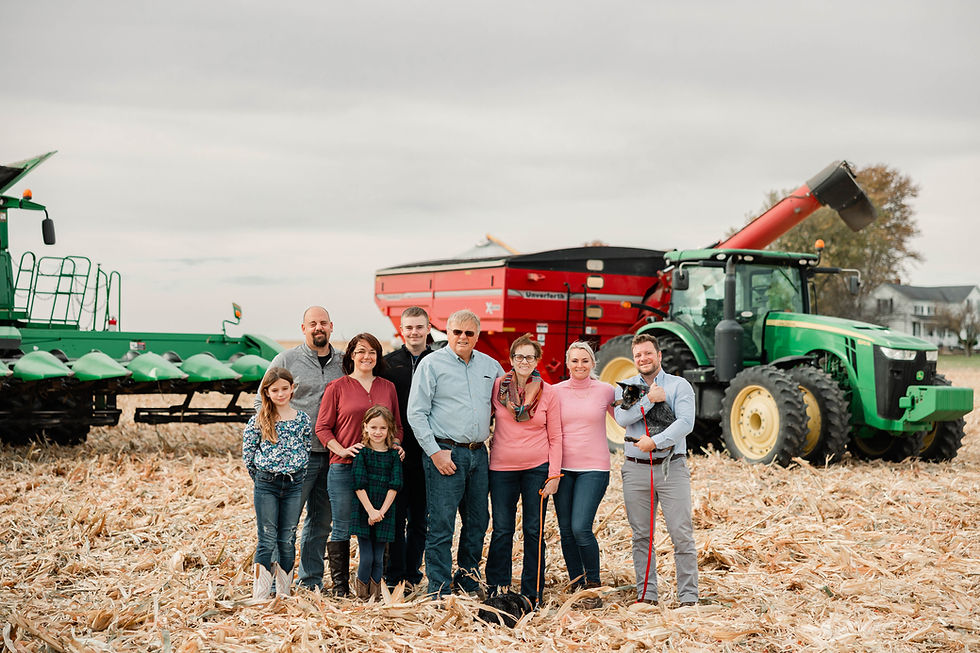Bridging Generations: Leveraging Mindset Shifts Across the Farm
- Jacqueline Langlois
- Jul 1
- 3 min read
In agriculture, where tradition meets innovation, the clash between generations can hinder progress. Picture your operation: seasoned leaders with decades of experience are working alongside younger team members from Gen Z, bursting with energy and tech-savvy ideas. The differences between these groups can sometimes create friction, making collaboration and innovation challenging. However, by understanding and leveraging these differences, you can develop a shared vision that benefits everyone involved.
The Importance of Bridging Generational Gaps
Bridging the generational divide is more than just a goal; it is vital for the advancement of agriculture. Older farmers often focus on maximizing yields based on traditional farming techniques. In contrast, younger generations emphasize sustainability and new practices. Without a way to merge these perspectives, you risk stalling innovation.
A breakdown in communication, ideas and expectations can worsen misunderstandings, resulting in unresolved challenges. For instance, a survey by the American Farm Bureau showed that 60% of farmers aged 18-34 prioritize sustainability compared to only 36% of farmers aged 55 and older. This divide indicates the importance of creating spaces where both traditional wisdom and new insights can coexist and lead to collective advancements.
Introducing the “Voice of the Other” Exercise
How can you effectively bridge these generational gaps? One practical method is the “Voice of the Other” exercise. This technique pairs leaders from different generations to encourage them to view challenges from each other’s perspectives. When individuals step into someone else's shoes, it fosters empathy and promotes deeper understanding.
Consider Jamie, a veteran farmer who is skeptical about investing in solar panels, and Drew, a recent Gen Z hire who champions renewable energy. During the exercise, they would share their views and concerns by taking turns explaining their views and being open to the other's. Jamie might voice worries about the initial costs and potential impact on crop yields, while Drew could highlight the long-term savings and ecological advantages.
Through this dialogue, both can discover common ground, helping them arrive at innovative outcomes that satisfy everyone’s interests.
Reframing Challenges with Empathy
To maximize the effectiveness of this exercise, follow a simple three-question reframing script designed to facilitate open communication:
“I hear you say…”
Start by acknowledging the other generation's concerns, which requires active listening. This step fosters respect and sets a positive tone for the conversation.
“I imagine you feel…”
Express empathy by addressing the underlying emotions driving their opinions. Recognizing fears or hopes allows for vulnerability and strengthens connections.
“Here’s how I translate that into action…”
Discuss actionable steps that honor both perspectives and move toward a collaborative solution. This transition shifts the focus from problems to creative avenues for progress.
Using this script encourages a shared vision and helps both generations collaborate on initiatives that initially seemed daunting.
Benefits of Generational Collaboration
Embracing collaboration between generations can profoundly transform farming in several important ways:
Innovation through Diversity
Combining traditional farming methods and modern technology fosters innovation. For example, older generations can teach new ones effective crop production and management while younger generations introduce data analytics tools that enhance yield predictions and modeling. This blend of knowledge encourages a culture of continuous learning, laying the groundwork for groundbreaking practices.
Building a Unified Team
Understanding varying values among generations can help form a unified team where everyone feels valued. When diverse viewpoints are respected, they can lead to stronger problem-solving strategies, ultimately increasing productivity. A study from Deloitte reported that inclusive teams are 1.8x more likely to be motivated to perform well.
Taking Steps Toward Transformation
To implement the “Voice of the Other” exercise on your farm, consider the following practical steps:
Schedule Regular Meetings: Create routine opportunities for discussions on farming practices, challenges, and new ideas. These casual sessions can spark innovative solutions.
Implement Workshops: Host structured workshops that facilitate the reframing script. This dedicated time can lead to impactful conversations and shared insights.
Encourage Peer Mentorship: Facilitate mentorship programs that allow experienced farmers to guide newer farmers, while younger farmers share tech insights. This two-way learning strengthens the bond across generations.
Looking Ahead to a Unified Future
As the agricultural landscape continues to evolve, bridging generational gaps is crucial. By embracing exercises like the “Voice of the Other,” you create an environment rich in empathy, collaboration, and innovation. Implementing open and supportive conversations not only helps your operation thrive but also honors the legacy of previous generations.
Taking these actionable steps will pave the way for a cohesive future in agriculture, seamlessly blending the wisdom of the past with the promise of the future.

.png)



Comments